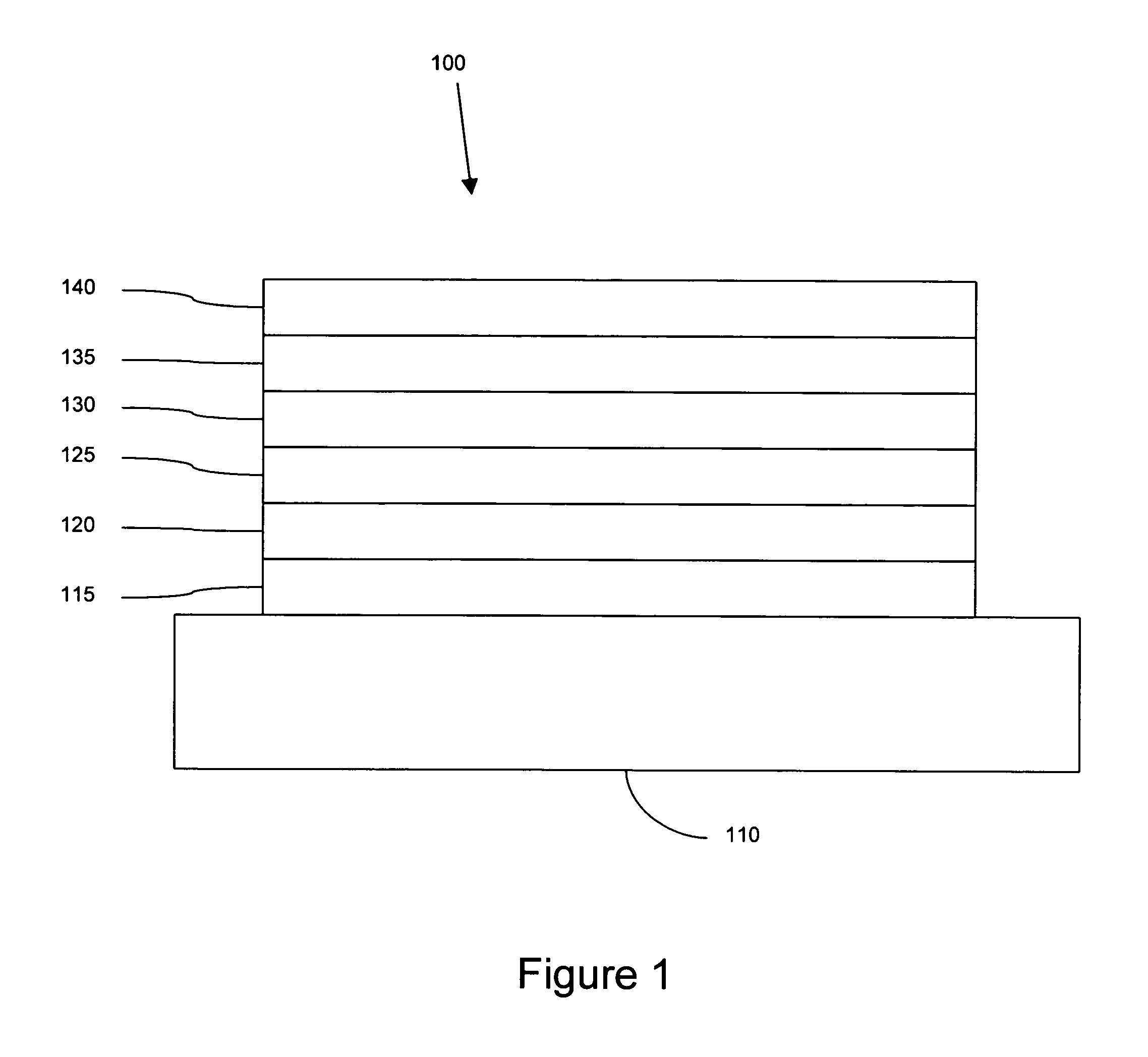Organic devices having a fiber structure
a fiber structure and optoelectronic technology, applied in the manufacture of cladded optical fibers, instruments, final products, etc., can solve the problems of difficult and expensive production of efficient crystalline-based devices, not providing signal or current to control detection circuitry, and not providing power to devices, equipment, devices or equipmen
- Summary
- Abstract
- Description
- Claims
- Application Information
AI Technical Summary
Problems solved by technology
Method used
Image
Examples
Embodiment Construction
[0030] An organic optoelectronic device is provided, having a fiber structure. Various types of organic optoelectronic devices may be provided, including organic photosensitive devices and organic light emitting devices. Embodiments of the present invention may comprise an anode, a cathode, and an organic layer disposed between and electrically connected to the anode and the cathode.
[0031] Organic photosensitive devices of embodiments of the present invention may be used, for example, to generate a usable electrical current from incident electromagnetic radiation (e.g., PV devices) or may be used to detect incident electromagnetic radiation. A “photoactive region” is the portion of the photosensitive device that absorbs electromagnetic radiation to generate excitons that may dissociate in order to generate an electrical current. Organic photosensitive optoelectronic devices may include at least one transparent electrode to allow incident radiation to be absorbed by the device. Seve...
PUM
 Login to View More
Login to View More Abstract
Description
Claims
Application Information
 Login to View More
Login to View More - R&D
- Intellectual Property
- Life Sciences
- Materials
- Tech Scout
- Unparalleled Data Quality
- Higher Quality Content
- 60% Fewer Hallucinations
Browse by: Latest US Patents, China's latest patents, Technical Efficacy Thesaurus, Application Domain, Technology Topic, Popular Technical Reports.
© 2025 PatSnap. All rights reserved.Legal|Privacy policy|Modern Slavery Act Transparency Statement|Sitemap|About US| Contact US: help@patsnap.com



